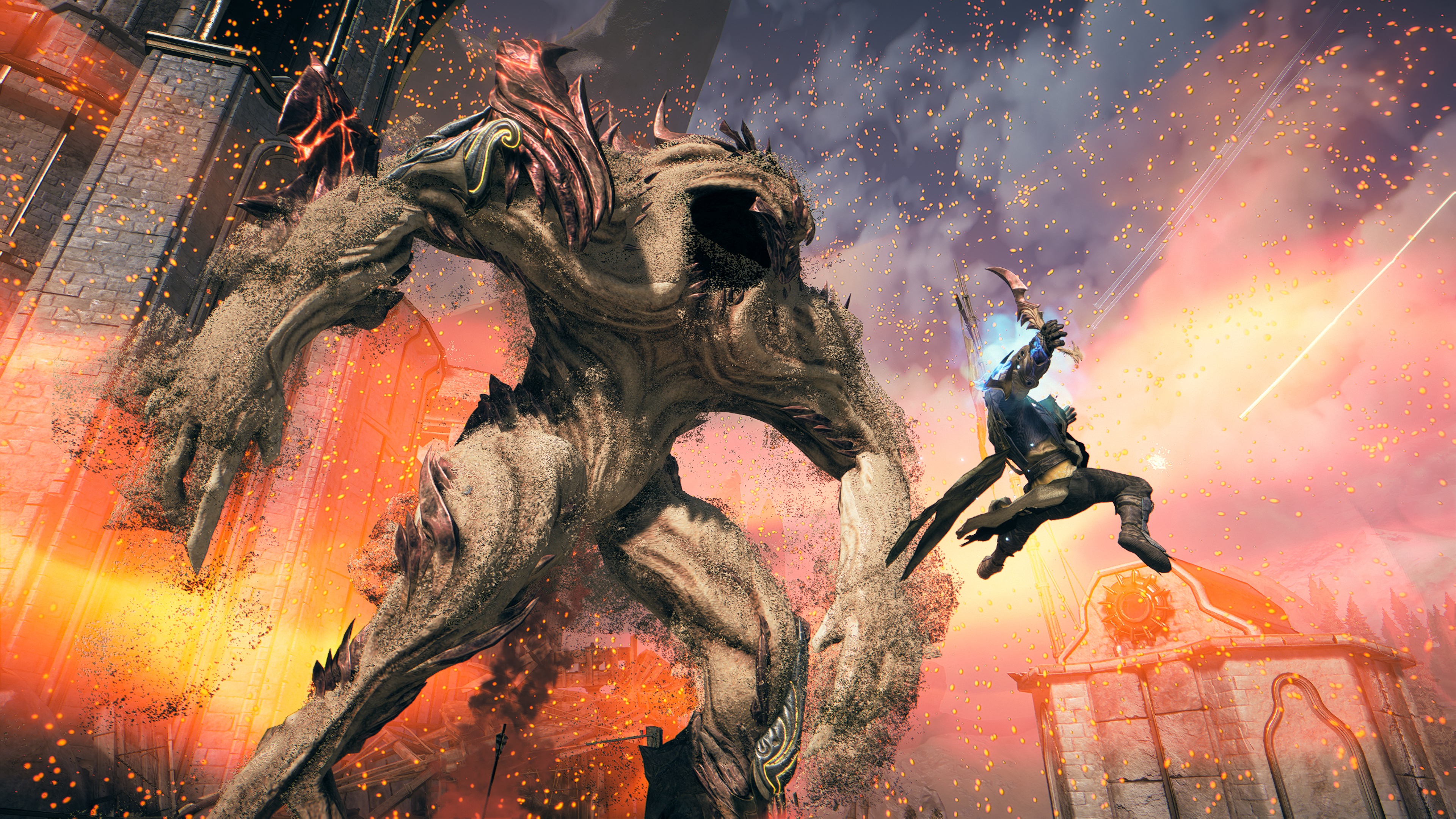
Imagine a world where you are a slave to a tyrannical empire ruled by Thelos, an evil sun god who has reduced the world to a lifeless desert and populated it with giant sand-elemental monsters called Wraiths. Then one day, you discover an ancient, mystical Gauntlet which has the power to shape the sands around you into weapons that will help you overthrow Thelos and save the world.
This is the world of Atlas Fallen, a new action-RPG developed by Deck13, the creators of The Surge and the original Lords of the Fallen. Unlike Deck13’s previous projects which were soulslike games, Atlas Fallen is a more traditional open-world affair where you fight giant monsters using a fast-paced, acrobatic combat system.
When I first saw this game’s art style and gameplay, it reminded me of Western action RPGs I used to play on the Xbox 360 like Darksiders or Kingdoms of Amalur: Reckoning. Out of a sense of nostalgia, I wanted to check out Atlas Fallen, and thanks to a review code provided by the game’s publisher, Focus Entertainment, I was able to do just that. Will I uncover the next best Xbox game buried beneath the sands of Atlas Fallen? Let’s find out together.
Disclaimer: This review was made possible thanks to a review code provided by Focus Entertainment. The company did not see the contents of this review before publishing.
Atlas Fallen — The pros
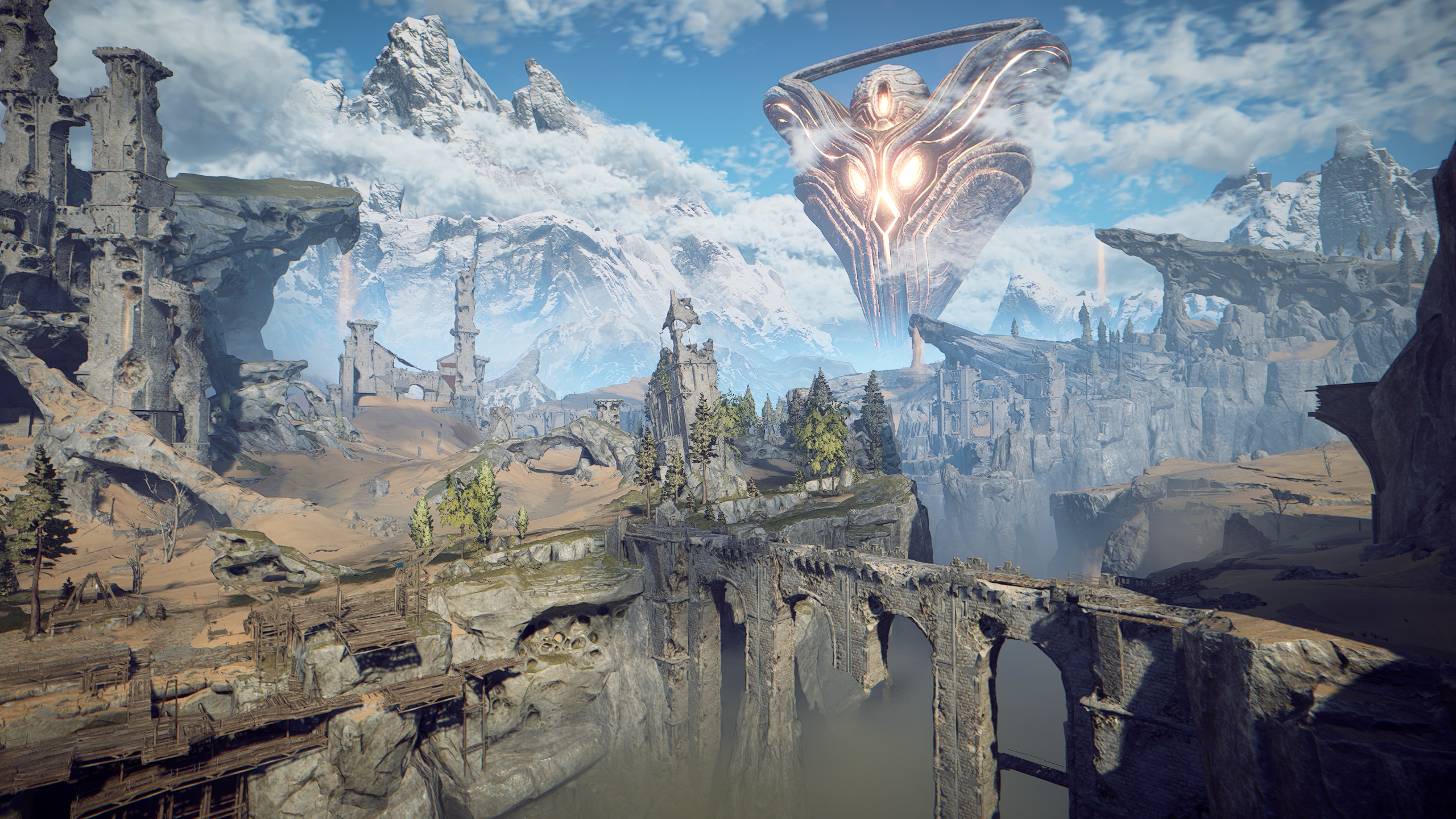
Developer: Deck13
Publisher: Focus Entertainment
Genre: Action-RPG
Playtime: 22 hours
Release date: August 10, 2023
Price: $59.99
Platforms: Xbox Series X|S, PS5, Windows PC (Steam)
Reviewed on: Xbox Series X
Before we begin, I need to preface this review by stating that I was unable to test the two-player co-op feature of Atlas Fallen and that I played it on ‘Hard’ mode for the extra challenge. So, this review will be based on a solo player’s perspective whose experience will differ from most people playing it on ‘Normal’ or ‘Easy’ mode.
The gameplay structure of Atlas Fallen is divided into two halves: firstly, open-world exploration and secondly, combating Thelos’ army of Wraiths. To reach Thelos and defeat him, you will need to trek across multiple open-world levels, defeat Wraiths you find along the way and uncover hidden artifacts that will strengthen the power of your Gauntlet.
This is easier said than done as the open-world locales are gigantic and each area is locked behind sturdy gates that will only open once you have achieved enough story progression. Not to mention, the key items and gear you will need to progress and survive are hidden away in long-forgotten ruins which either can’t be traversed by normal means or are guarded by intimidating Wraith bosses that will crush you if you’re not prepared.
Exploring the vast deserts of Atlas Fallen
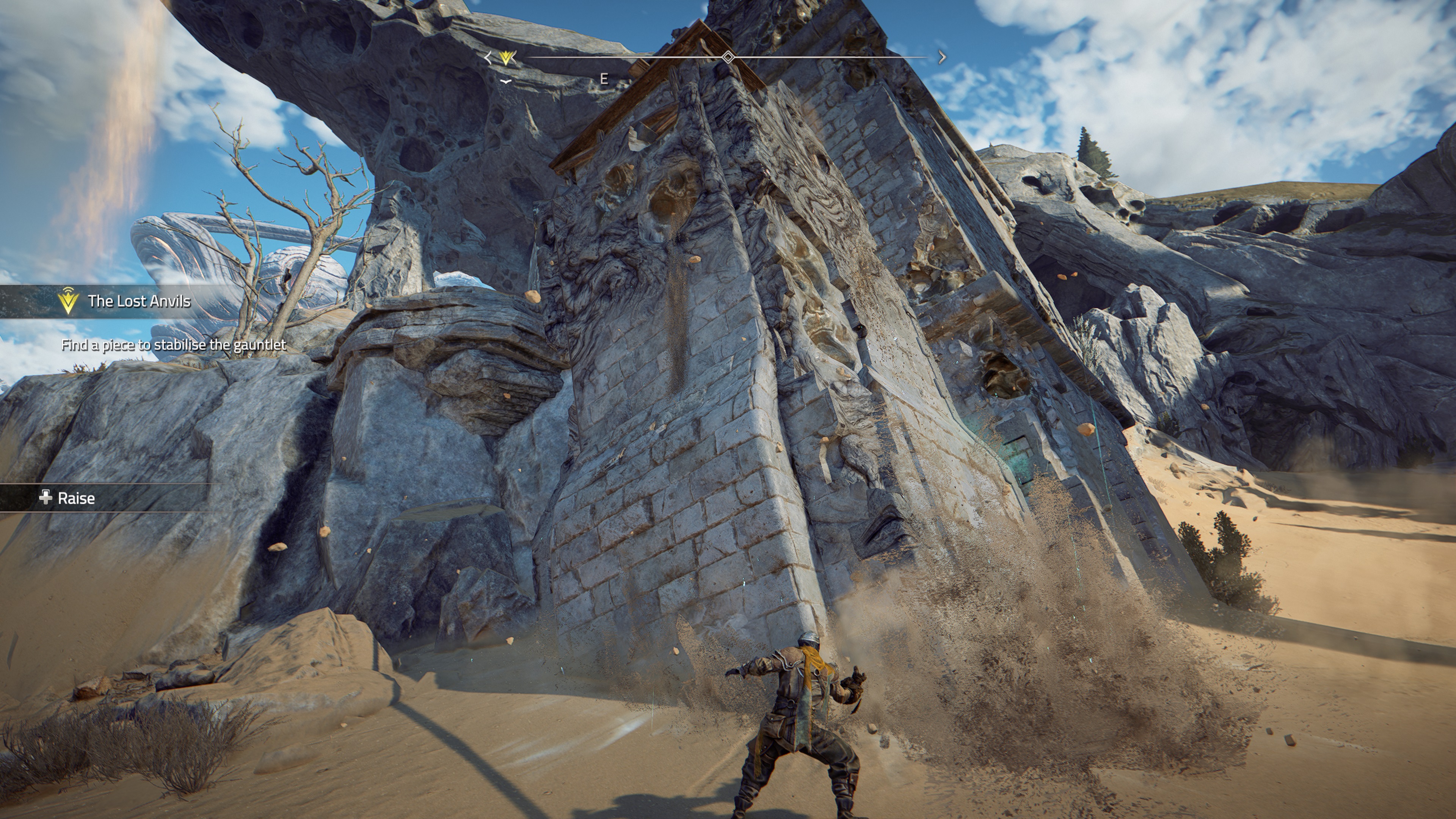
Good thing your Gauntlet can help you to overcome these obstacles as it can grant you many useful abilities for exploration. It can help you unearth ruins buried beneath the sand, enable you to double-jump or air-dash across platforms, travel quickly across the landscape by sliding on the sand, reveal secret lore messages about the world you live in and much more.
Along your journey, you will encounter NPCs trying to survive in ruined towns. Some characters are merchants who will sell you maps that hint at the locations of buried treasure, armor sets that will increase your stats, and crafting items used to create Essence Stones (which will be explained in more detail later). Meanwhile, other NPCs offer main story quests that will advance the plot upon completion or optional side-quests that offer lucrative rewards should you wish to pursue them.
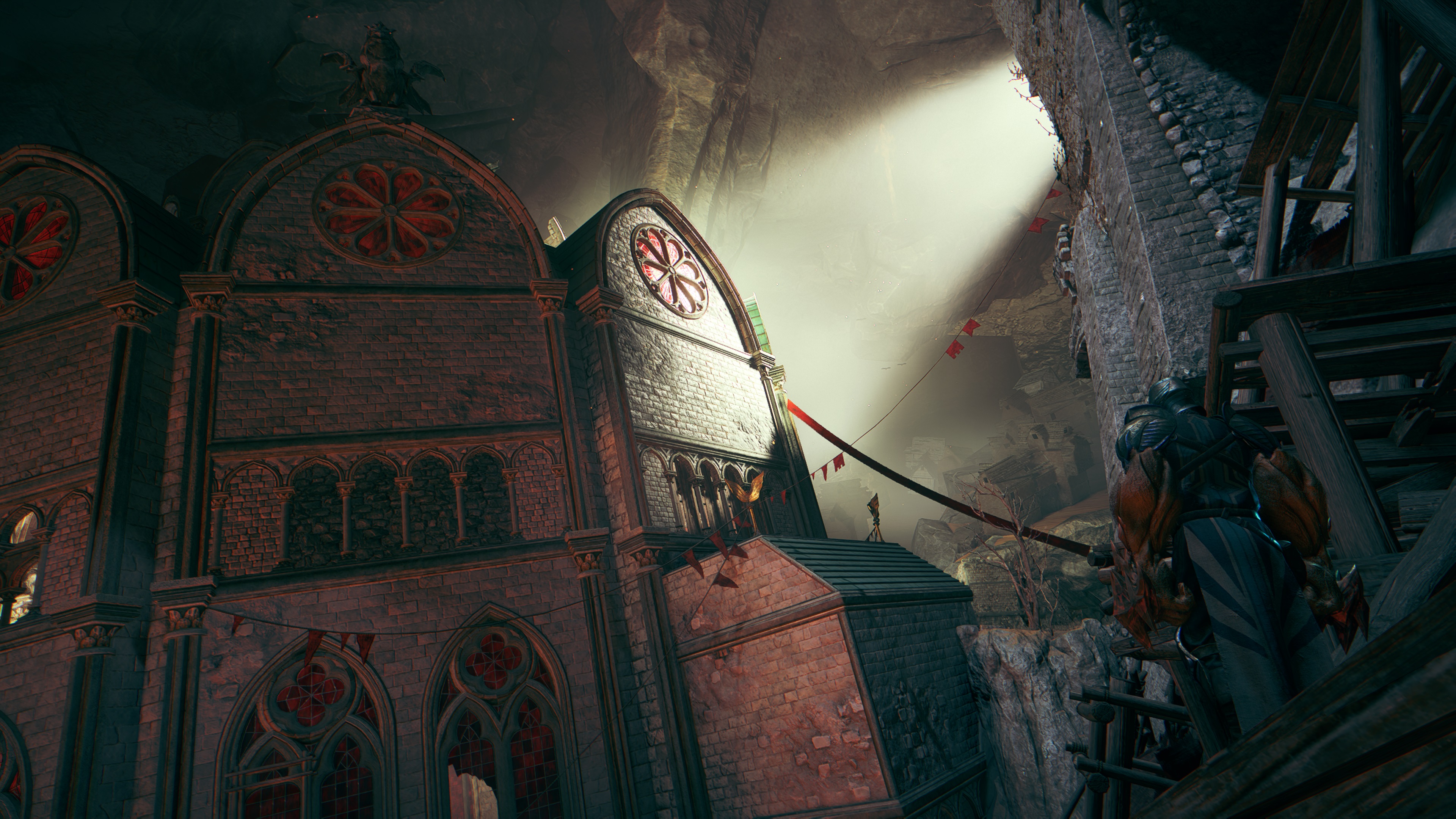
Surprisingly, I enjoyed the exploration portion of Atlas Fallen more than I was expecting. The environments of the open-world levels are intrinsically detailed and artistically varied with dunes, oases, mountains, partial grasslands, and battered remnants of civilization to keep exploration feeling fresh. Not to mention the subtle foreboding atmosphere in the outdoor areas where Thelos is looking down upon you and the world from his flying fortress, the Watcher – making you feel you’re never safe from his wrath.
There are also some fun non-linear platforming segments that test your skills with the Gauntlet’s mobility tools. They are satisfying to complete and serve as a nice break between exploration and combat.
My favorite part of exploration is simply using the Gauntlet to glide across the open-world levels like a boat speeding across the ocean. While you can fast-travel in this game by accessing anvils (which act as the game’s save points and upgrade stations), most of the time I preferred to sand-glide as it is exhilarating and visually makes my character look so cool.
Beware the wrath of the Wraiths
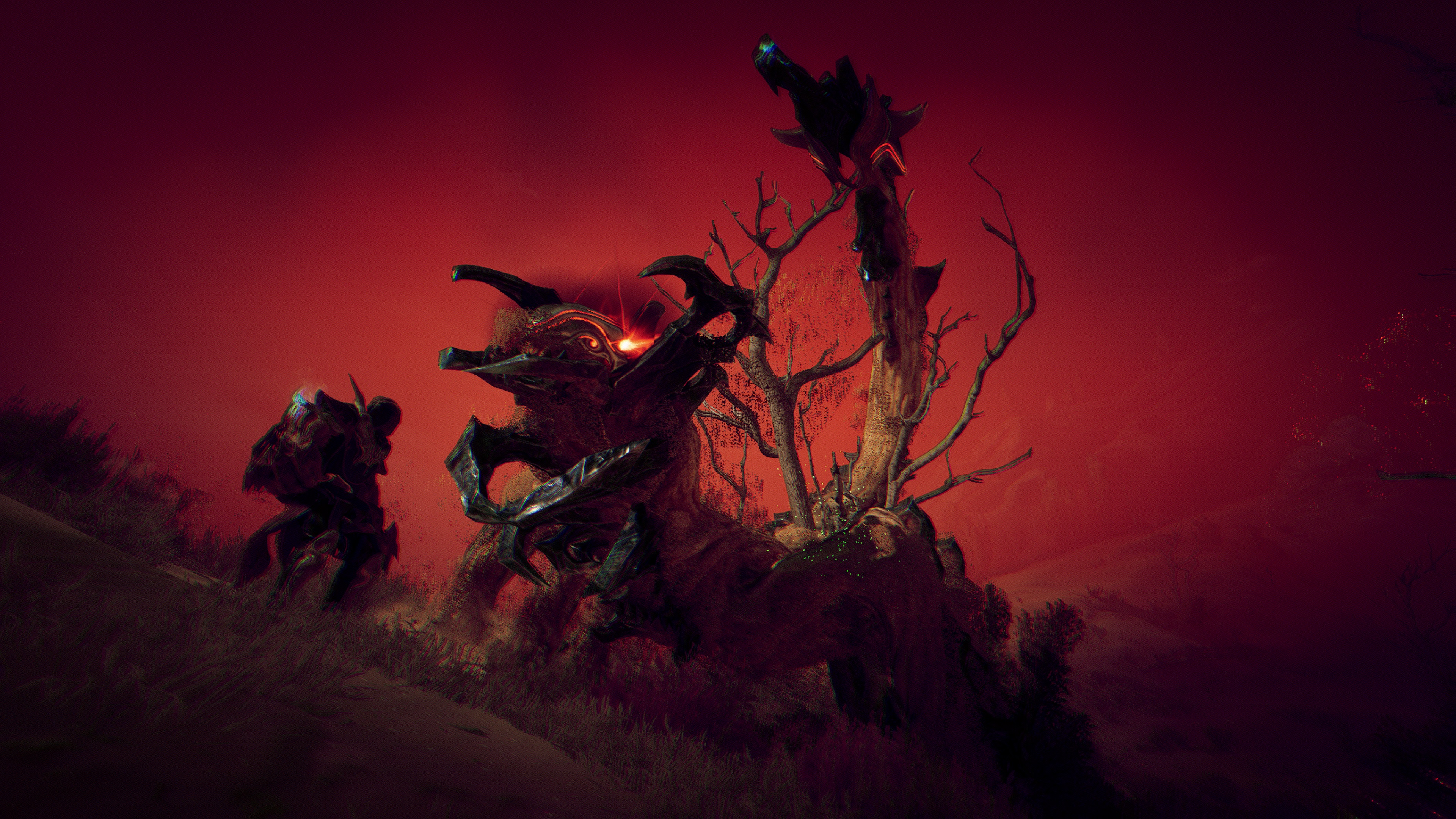
As you excavate ruins, you will frequently be forced to fight Wraiths. Wraiths are shape-shifting sand monsters who can materialize in a variety of forms including beasts, wyverns, sandworms, giant crabs, dinosaurs, humanoids, and more. Half of the wraiths you’ll fight are small fry that use their numbers to gang up on you, while the other half are giant bosses that hit like trucks.
The boss Wraiths have multiple health bars attached to specific parts of their bodies. To slay them, you must destroy each of a boss’ body parts marked with red health bars. Destroying body parts with yellow health bars won’t contribute to killing a Wraith boss but if you do destroy them, it will increase the chance of a boss dropping loot upon their death.
Luckily for you, the Gauntlet has more than enough tools and weapons to reduce the Wraiths to dust. During combat, the Gauntlet will grant you access to air dashes, dodge rolls, and a parry mechanic that will help you avoid incoming damage. Then when a Wraith is vulnerable, use the Gauntlet to create weapons out of the sand to deal damage to them.
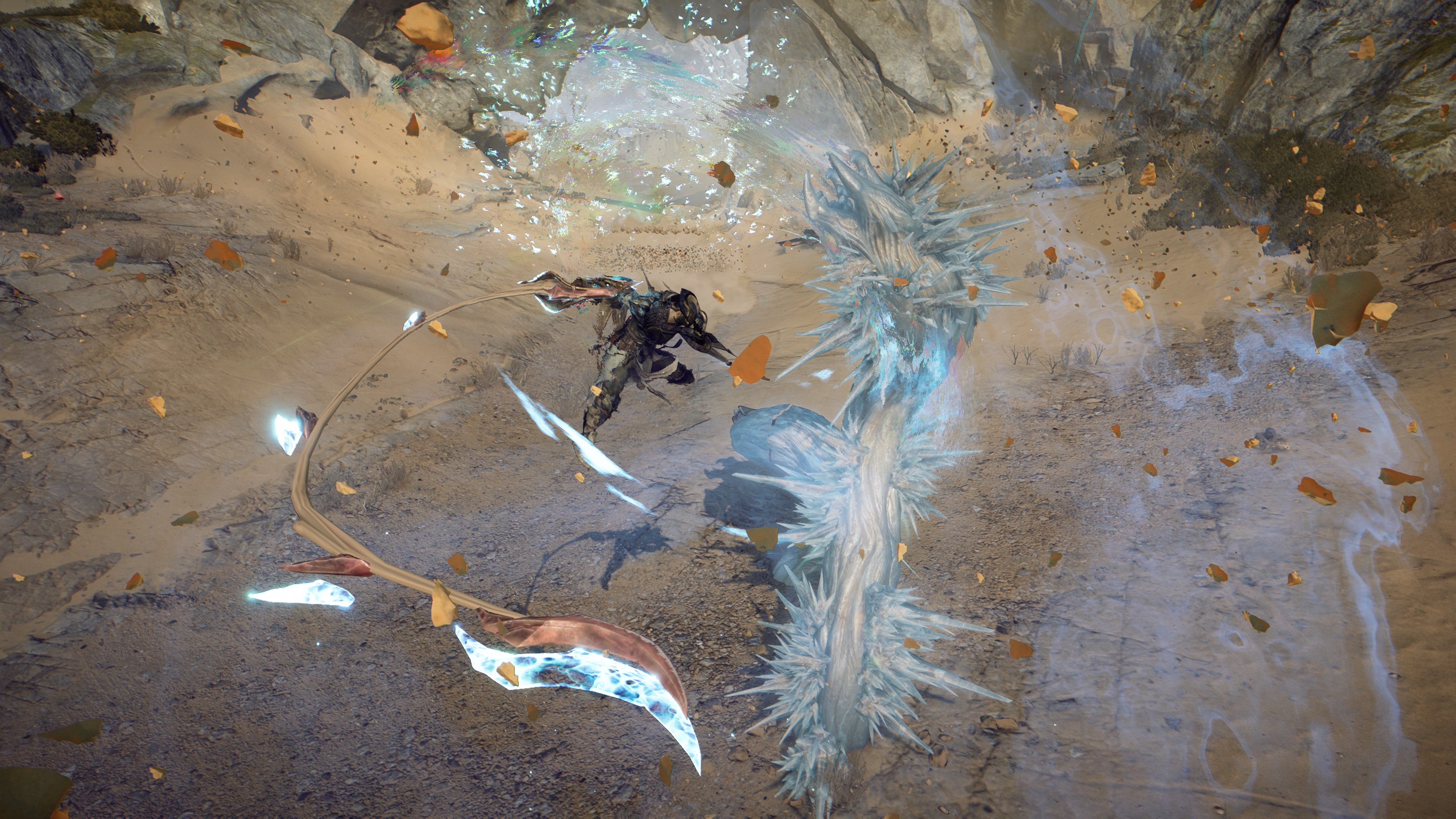
You have three weapons to use in Atlas Fallen, two of which can only be equipped at any one time: the Dunecleaver is an axe that can stun groups of enemies with heavy attacks, the Sandwhip Hook is a hooked whip that lets you latch onto enemies from afar, and the Knuckledust is a pair of fist weapons that hit fast and hard. Mixing and matching the special attacks and combos of these weapons, while making use of your evasive maneuvers are essential to achieving victory as dealing damage without getting hit will activate the Gauntlet’s trump card – the Momentum Gauge.
The Momentum Gauge is a special meter that rises as you damage Wraiths and depletes when you’re taking damage or are not fighting. As the Momentum Gauge rises, your weapons will start to transform and inflict more damage but your defense stats will decrease as a trade-off. You will also have access to a special finishing move that can potentially obliterate Wraiths in a single hit depending on how much of the Momentum Gauge meter is filled when used.
The Momentum Gauge of Atlas Fallen elevates the combat system to new heights of excitement.
Another benefit of the Momentum Gauge is that it will activate Essence Stones. Essence Stones are special items that be found through exploration, crafting from recipes, or completing quests for NPCs. These stones can enable you to use powerful abilities which can enhance your effectiveness in combat.
Some Essence Stones will let you pull off offensive or defensive techniques or grant passive traits so long as the Momentum Gauge reaches certain levels that the Essence Stones require to activate. On top of that, equipping specific Essence Stones can also trigger stat bonuses found in armor sets you will find throughout the world of Atlas Fallen.
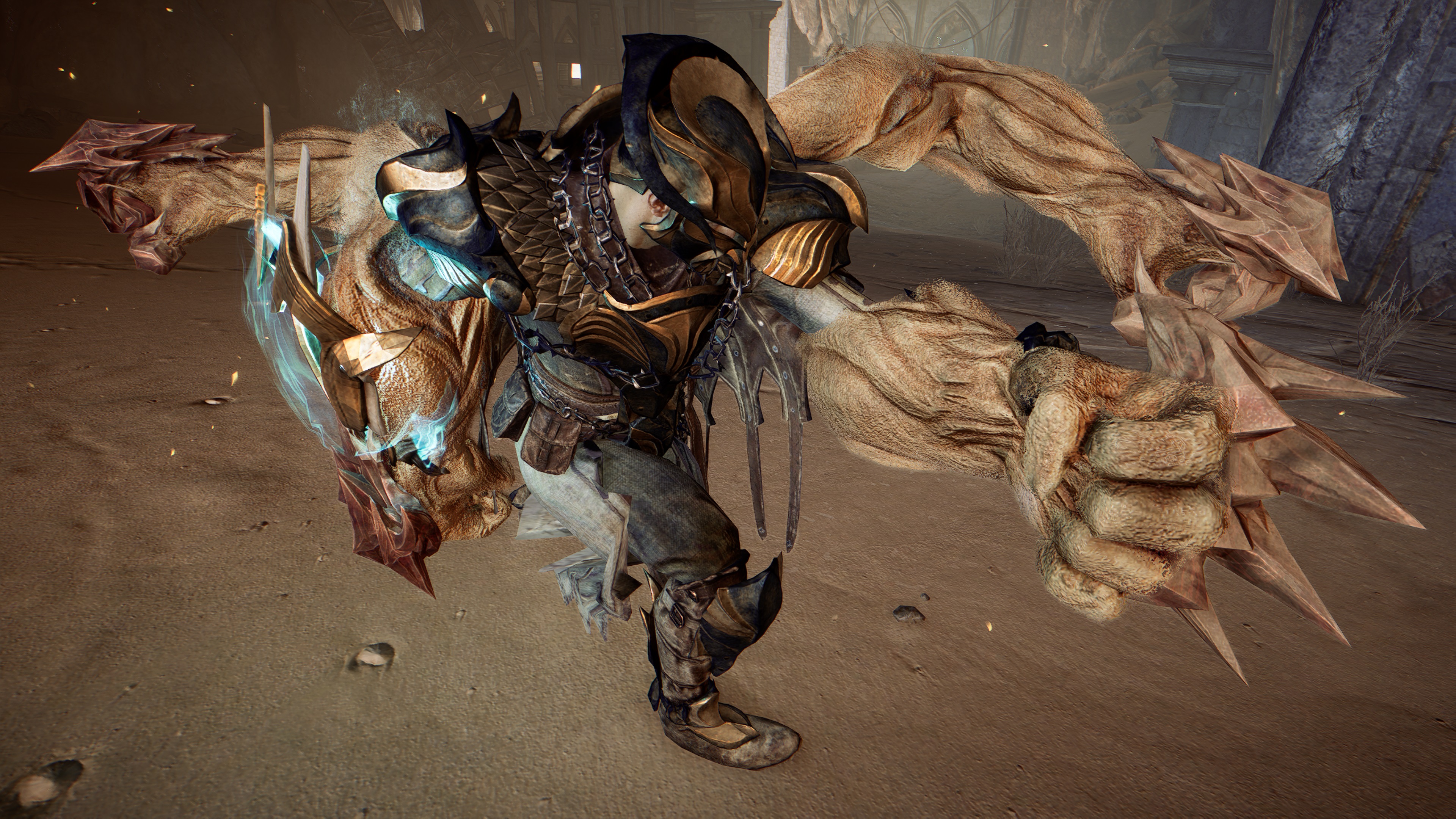
For the most part, I enjoyed the combat of Atlas Fallen. It is fast-paced, the mechanics are engaging and the Wraiths are fun and challenging enemies to fight. In addition, the game allows players a huge degree of freedom on how they build their playstyles thanks to the dozens of Essence Stones and armor sets available.
On a side note, you can customize the look of your armor sets by using a cosmetic transmogrification system that replaces the look of an armor set with another without altering its stats. You can also use dyes to change their color scheme and equip them with accessories so you can look stylish while remaining functional in combat.
The best part about the combat is the Momentum Gauge. This risk vs. reward mechanic elevated the excitement of the combat system by rewarding me with increased stats and flashy super moves for playing perfectly. Trying not to get hit by hordes of enemies so I could build up the Momentum Gauge and use it to summon a giant sand hammer or have the Knuckledust fist weapons form an extra pair of sand-made arms to pummel bosses into powder was so gratifying.
Atlas Fallen — The cons
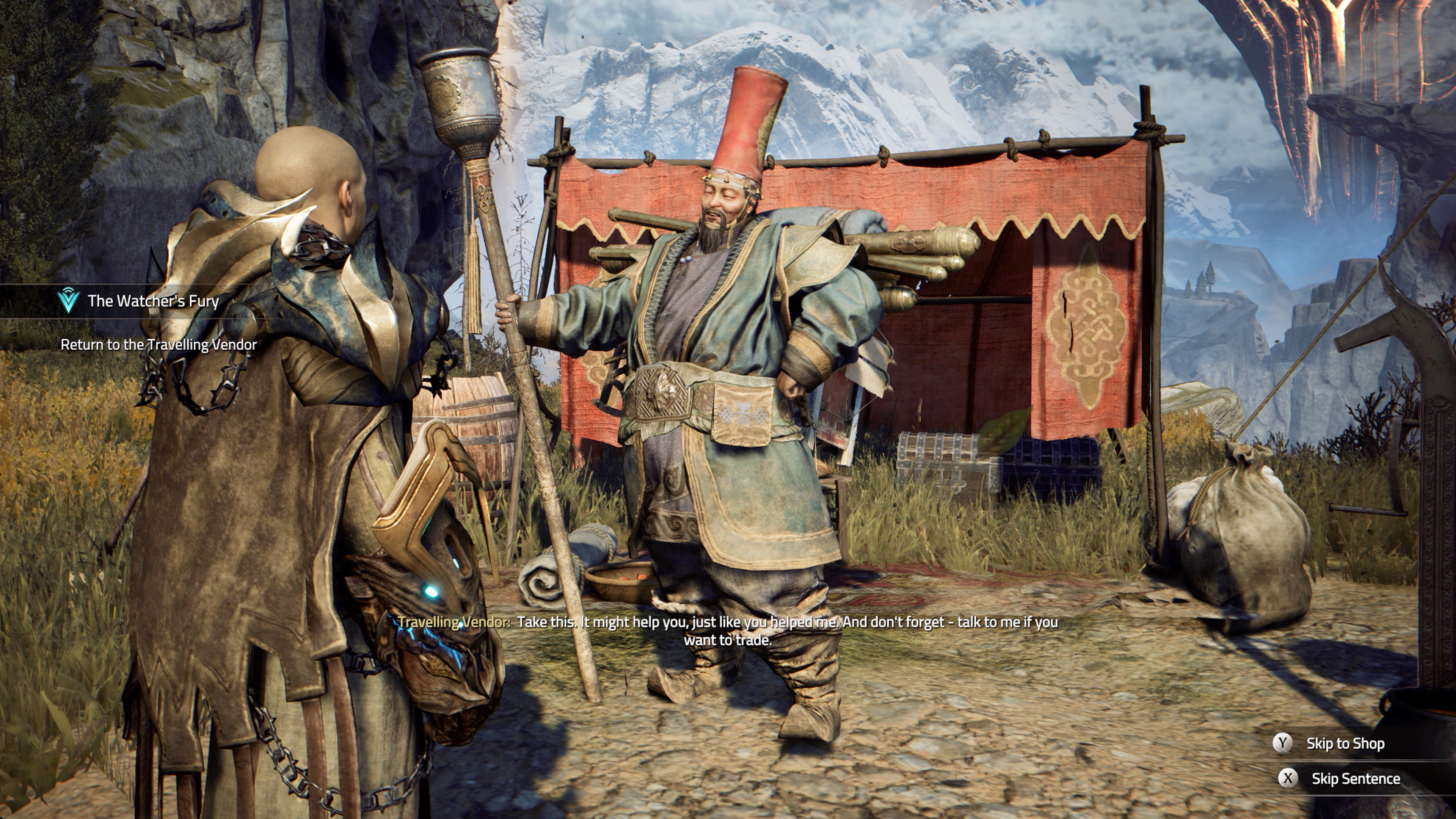
That being said, there are some aspects of the combat that I felt could’ve been executed better. For example, Sandskin, the parry mechanic which you use to deflect attacks felt awkward and clunky to use at times. This is mainly due to when Sandskin activates, it only lasts for a split second and the animation for it is simply covering your body in sand instead of your character taking a defensive stance.
When engaging enemies purely made of sand while fighting most of the time in deserts, sand-covered ruins, and sandstorms, it was hard for me to tell if I had activated Sandskin or not. The animation for Sandskin often blended into the background or became obscured during battle, leading to some unintentional, frustrating deaths.
Granted, I did manage to work around this flaw by finding an Essence Stone which made Sandskin last a second longer and I adopted a more evasive playstyle where I used the air-dashes and dodge rolls more often. Nonetheless, I still would’ve liked it if Sandskin had more elaborate animation and clearer visual indicators to help it stand out more in the chaos of battle.
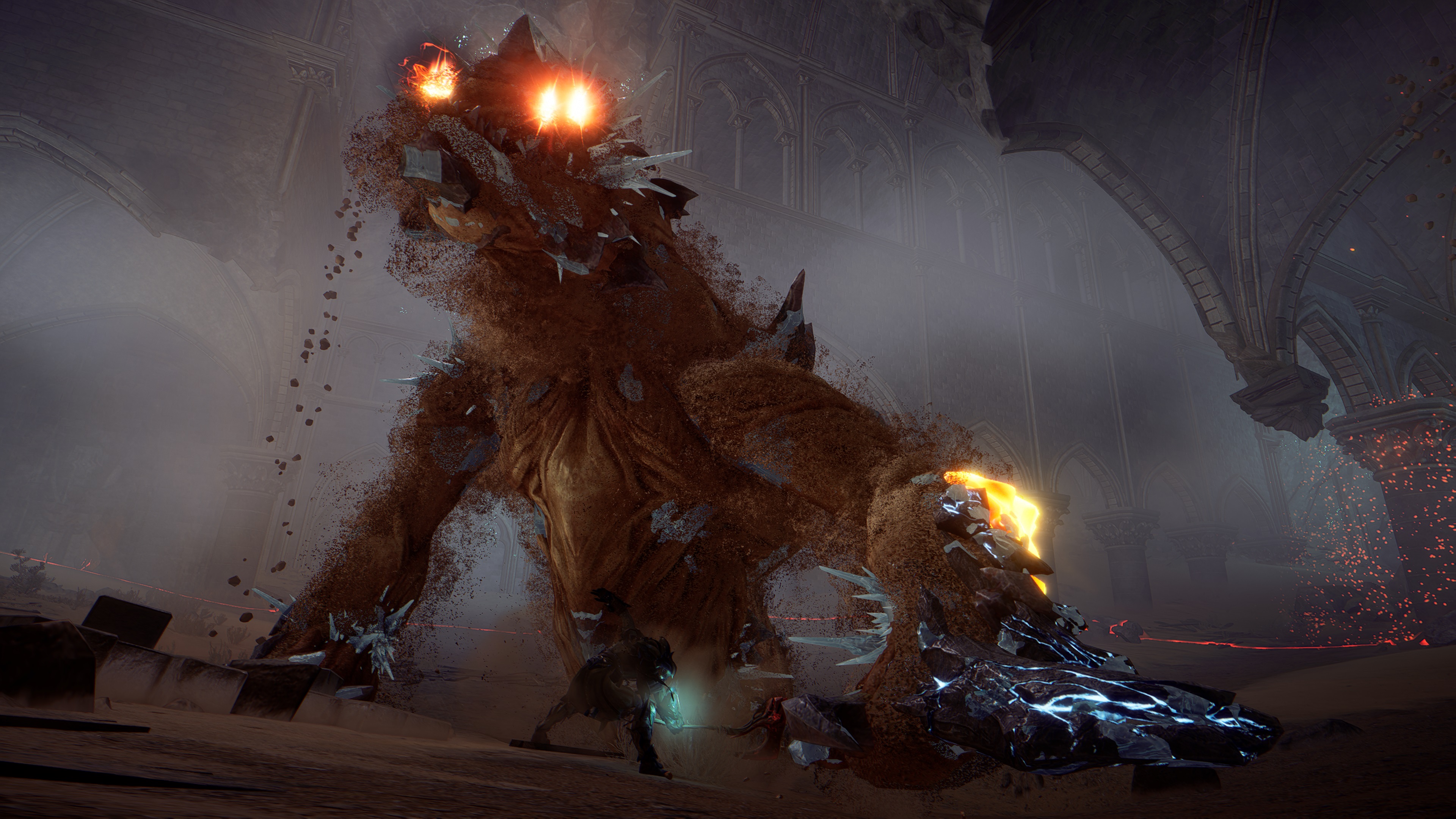
Another niggling aspect of the combat system is the restriction on what kind of Essence Stones you can equip. Essence Stones come in three Tiers and can only be equipped to certain Tier slots on your characters. Tier 1 Essence Stones can only be fitted into Tier 1 slots, Tier 2 Essence Stones can only be fitted into Tier 2 slots, and Tier 3 Essence Stones into Tier 3 slots. My problem with this system is that I preferred using some lower-tier Essence Stones but I wasn’t allowed to fit them into any slots above their designated tier slot.
I admit that some of the Essence Stones I liked weren’t as powerful as the higher-tier Essence Stones but it would have been good to have the option as they appealed to my defensive playstyle. Unfortunately, I wasn’t allowed to, so I was forced to equip Tier 2 and Tier 3 Essence Stones that didn’t feel useful to me. If I was allowed to equip lower-tier Essence Stones into the Tier 2 and Tier 3 slots, this would’ve opened up more layers of character customization.
While Atlas Fallen may have some flaws, they don’t tarnish the diamond within the rough of this game.
My last issue is relatively minor but it’s worth pointing out. The story of Atlas Fallen is your stereotypical “save the world” scenario, with cut-and-dry characters and for the most part, plays it safe. It’s not a bad plot per se as it does a competent job of setting up the world and why you need to go save it. Don’t go into this game expecting a grandiose narrative with world-shattering plot twists, just focus on the gameplay.
Atlas Fallen — Should you play it?
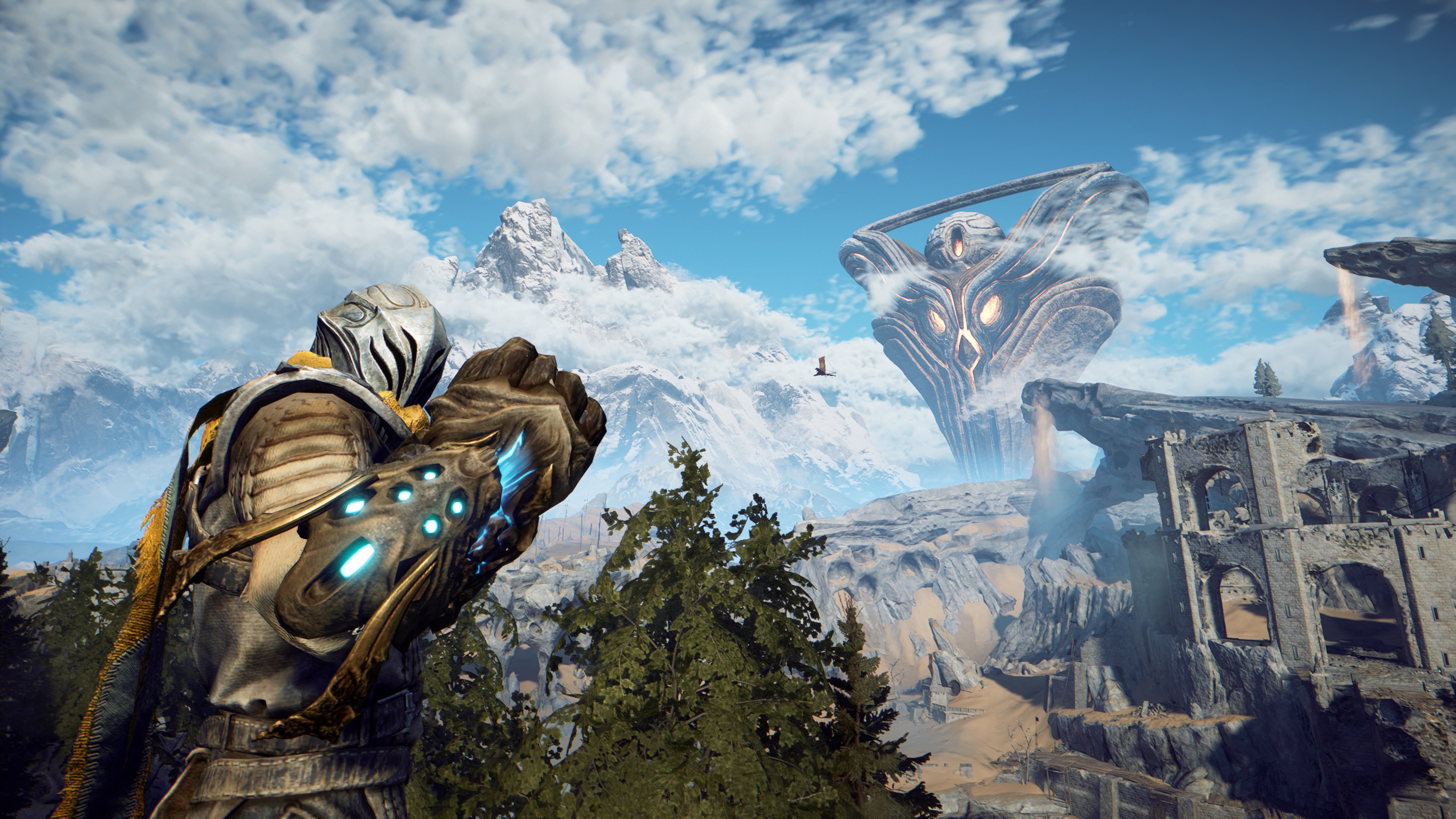
Overall despite its rough edges, I enjoyed my time journeying through the wastelands of Atlas Fallen. It has a deep and addictive combat system and a broad spectrum of enemies with fantastic character designs to hunt. The open-world locales are fun to explore thanks to mobility tools which make travel smoother and discovering the plentiful treasures hidden within is fulfilling.
While Atlas Fallen may have some flaws, they don’t tarnish the diamond within the rough of this game. If you’re a fan of open-world action-RPGs and like to hunt giant monsters, then I recommend Atlas Fallen. It is a great Xbox Series X and Xbox Series S game that will keep you busy with dozens of hours of worthwhile content to partake in.







